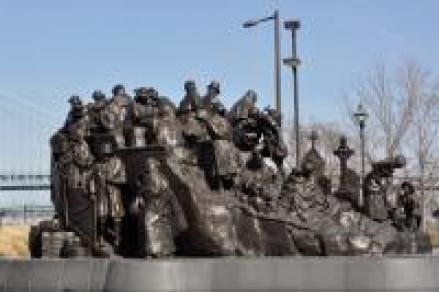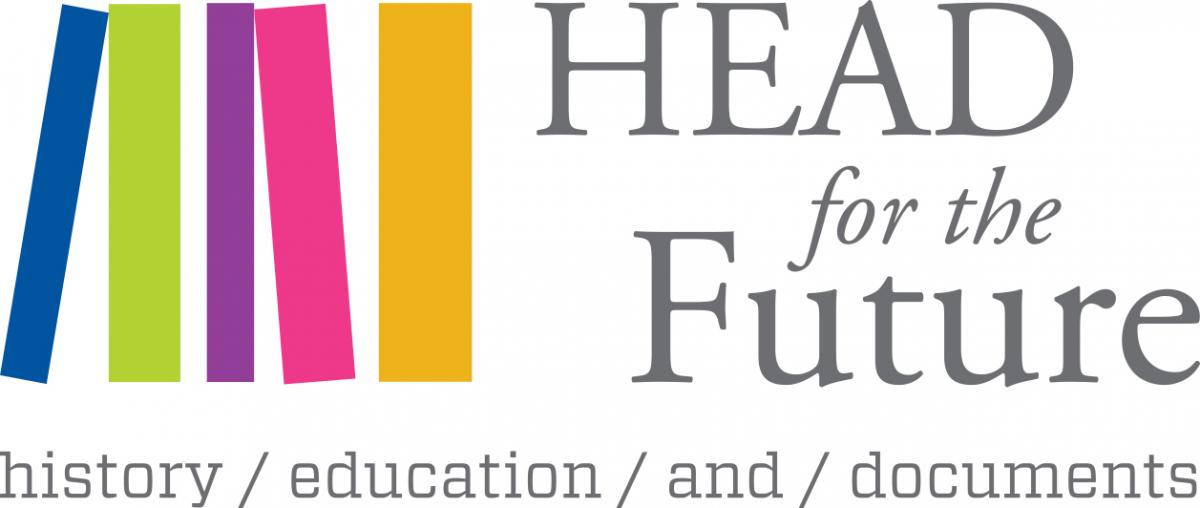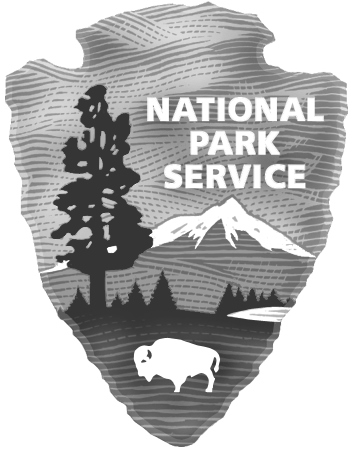The Napoleon Bonaparte quote that is the title of this lesson highlights its two themes: historiography and multiple histories. In this lesson, students will be examining historiography – the idea that history, as a story told, reflects the ideals and beliefs of the storyteller. Students will be introduced to this idea through study of the Irish immigration experience, using Irish Memorial (Leacht Cuimhneacháin na nGael) in Philadelphia as a starting point. Students will learn through the use of multiple histories – a variety of people telling their experiences – that history should be seen and can be told in a way that is multi-dimensional and relevant to more people.
"What is History But a Fable Agreed Upon?"
"What is History But a Fable Agreed Upon?"

Location
Type of Landmark
Learning Objectives
- Students will be able to determine and summarize the theme of primary and secondary sources by examining and evaluating evidence.
- Students will be able to look critically at historical events by comparing and contrasting differing points of view in primary and secondary sources.
- Students will be able to show a multidimensional understanding of a historical event by synthesizing information from primary and secondary sources (i.e., multiple histories).
Materials
- “The Mortar of Assimilation – and the one element that won’t mix” political cartoon
- “No Irish need apply” song lyrics
- “Suffer for About the First Six Months After Leaving Home” John Doyle letter
- Image of John Barry statue (provided in files)
- New York Times article, March 16, 1907
- “Uncle Sam’s Lodging House” political cartoon
- “Committee of Search” Catholic Herald article, July 18, 1844
Suggested Instructional Procedures
- Students begin by looking at and sharing observations about the Irish Memorial. Teacher can introduce the term immigration and the concept of the “Great Irish Migration 1845-1850”. Teacher can expand students’ analysis with questions/comments such as:
- Why do we have this memorial? What do you think the sculptor and the people who erected the monument are saying about Irish immigration?
- In a sentence tell what you think the theme of the memorial might be.
- How accurate do you feel this memorial is to the experience of the emigrants from Ireland?
Essentially, through questioning and conversation, teachers should help students construct an idea of the immigrant experience as shown in the memorial.
- Divide students into groups and present each group with copies of the primary sources (any of the first five listed materials). Students should share their results with the whole group. Teacher can support students with questions similar to the kinds asked about the memorial:
- What do you think the author(s) of the source is/are saying about Irish immigration?
- In a sentence, tell what you think the theme of the source might be.
- Together, examine the Catholic Herald article. Discuss which founding principles the writer is highlighting and discuss if that issue has changed.
- Continue the discussion by directly connecting the memorial to the sources they have examined, including the Catholic Herald article. To help students discuss and articulate the mismatch, teacher can ask questions such as:
- How do themes of the sources support or not support the theme of the Irish Memorial?
- What are your opinions on the mismatched portrayal in the Irish immigration experience as seen in some of the sources and the memorial?
Essentially, teachers should help students see that the mismatch occurs because of different perspectives to this historical event (i.e., multiple histories). Teachers could help students see the different perspectives of each source by asking such questions: Who created this source? What was their purpose? When was it created? Where would people see this source? What has happening at the time?
Vocabulary
Immigration: The action of permanantly moving to a foreign country.
Collective Memory: A shared pool of knowledge and information common in all members of a social group.
Historiography: The history of history. Rather than looking at an actual event, historiography looks at the historical interpretation of an event and how it has changed. In essence historiography's goal is to track the change, or lack thereof, of historical thought over time.
Memorial: An object constructed to remind people about an event.
End of Lesson Assessment
The students will create “their history” of the immigration experience in Philadelphia. Their history should feature multiple histories which include multiple sources (primary and/or secondary), founding principles of the country, their own or anecdotal experiences as well as possibly the experiences of other ethnic groups. Students may choose the form in which they present this history, including but not limited to an essay, a political cartoon, a song or poem, an imagined newspaper article. The grading rubric is here.
Subject
Grade Level
Duration of Lesson
Standards/Eligible Content
Common Core Standards
Author
Autumn Childs, Low Level Literacy GED Instructor, Pennsylvania
Funders/Sponsors
Cultures of Independence has been made possible in part by a major grant from the National Endowment for the Humanities: Celebrating 50 Years of Excellence
Any views, findings, conclusions, or recommendations expressed in this website or during the institutes, do not necessarily represent those of the National Endowment for the Humanities.
Additional funding is being provided by Wells Fargo through HEAD for the Future, its partnership with HSP, and by Independence National Historical Park.


Attention Teachers!
Let us know how you used this plan and be featured on our site! Submit your story here.
